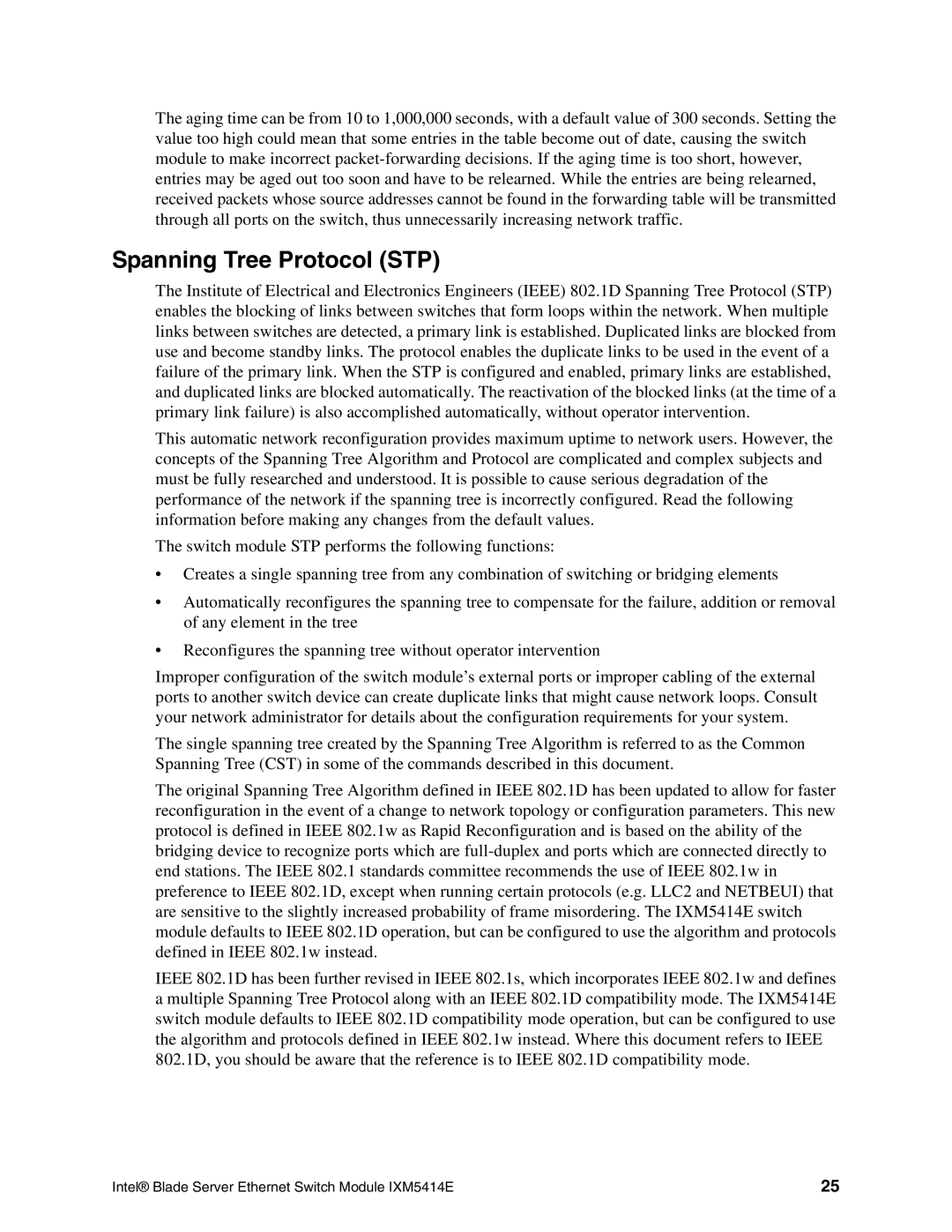The aging time can be from 10 to 1,000,000 seconds, with a default value of 300 seconds. Setting the value too high could mean that some entries in the table become out of date, causing the switch module to make incorrect
Spanning Tree Protocol (STP)
The Institute of Electrical and Electronics Engineers (IEEE) 802.1D Spanning Tree Protocol (STP) enables the blocking of links between switches that form loops within the network. When multiple links between switches are detected, a primary link is established. Duplicated links are blocked from use and become standby links. The protocol enables the duplicate links to be used in the event of a failure of the primary link. When the STP is configured and enabled, primary links are established, and duplicated links are blocked automatically. The reactivation of the blocked links (at the time of a primary link failure) is also accomplished automatically, without operator intervention.
This automatic network reconfiguration provides maximum uptime to network users. However, the concepts of the Spanning Tree Algorithm and Protocol are complicated and complex subjects and must be fully researched and understood. It is possible to cause serious degradation of the performance of the network if the spanning tree is incorrectly configured. Read the following information before making any changes from the default values.
The switch module STP performs the following functions:
•Creates a single spanning tree from any combination of switching or bridging elements
•Automatically reconfigures the spanning tree to compensate for the failure, addition or removal of any element in the tree
•Reconfigures the spanning tree without operator intervention
Improper configuration of the switch module’s external ports or improper cabling of the external ports to another switch device can create duplicate links that might cause network loops. Consult your network administrator for details about the configuration requirements for your system.
The single spanning tree created by the Spanning Tree Algorithm is referred to as the Common Spanning Tree (CST) in some of the commands described in this document.
The original Spanning Tree Algorithm defined in IEEE 802.1D has been updated to allow for faster reconfiguration in the event of a change to network topology or configuration parameters. This new protocol is defined in IEEE 802.1w as Rapid Reconfiguration and is based on the ability of the bridging device to recognize ports which are
IEEE 802.1D has been further revised in IEEE 802.1s, which incorporates IEEE 802.1w and defines a multiple Spanning Tree Protocol along with an IEEE 802.1D compatibility mode. The IXM5414E switch module defaults to IEEE 802.1D compatibility mode operation, but can be configured to use the algorithm and protocols defined in IEEE 802.1w instead. Where this document refers to IEEE 802.1D, you should be aware that the reference is to IEEE 802.1D compatibility mode.
Intel® Blade Server Ethernet Switch Module IXM5414E | 25 |
